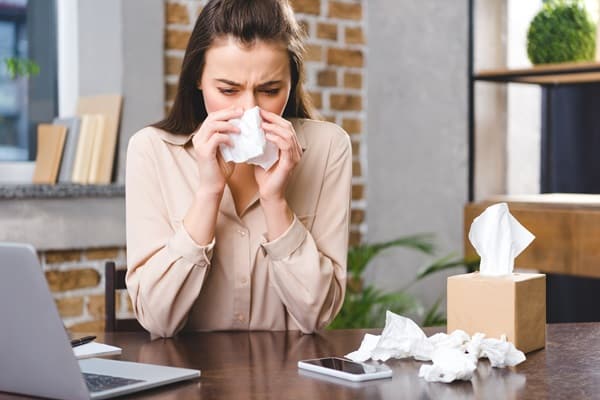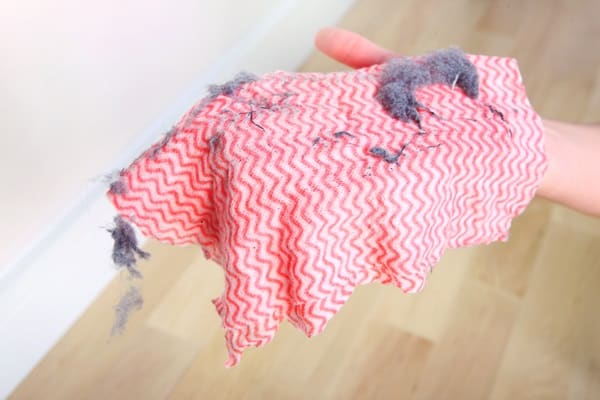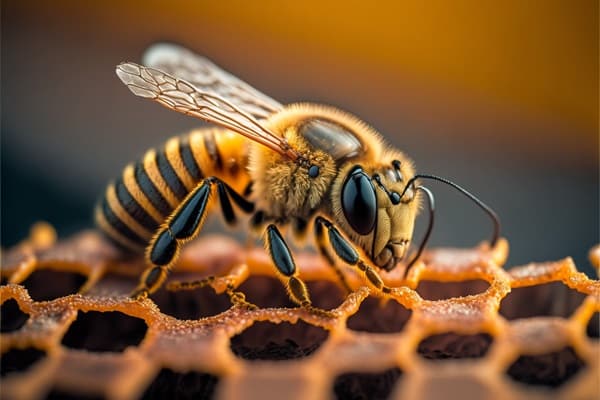Navigating a world filled with potential allergens can be like walking through a minefield for those susceptible to allergies. From the pollen in the air during springtime to the ever-so-tempting but potentially dangerous peanut butter sandwich, allergies lurk around every corner. Understanding what triggers these allergic reactions is the first step toward reclaiming your life. This post serves as a comprehensive guide to common allergies and offers practical advice on how to avoid them. By the end, you’ll be better equipped to live a life less hindered by sneezes, rashes, and other allergic symptoms.
Contents
- 1 Unveiling The Mystery Of Allergies
- 2 Pollen Allergies: The Unseen Culprit
- 3 Pet Allergies: Furry Friends Or Foes?
- 4 Food Allergies: When Meals Turn Menacing
- 5 Contact Dermatitis: More Than Skin-Deep
- 6 Dust And Mold Allergies: The Invisible Invaders
- 7 Insect Allergies: Small Creatures, Big Problems
- 8 Medical Solutions And Treatments
- 9 Learn To Take Control Of Your Allergies
Unveiling The Mystery Of Allergies

Allergies are your body’s exaggerated response to substances that are generally not harmful. When your immune system identifies an allergen, it goes into overdrive, releasing chemicals like histamine to combat what it perceives as a threat. This reaction manifests as the symptoms people commonly associate with allergies, such as sneezing, itching, or even more severe responses like anaphylaxis.
Understanding the role of the immune system in allergies is crucial. It’s like a vigilant guard, always on the lookout for invaders. However, in the case of allergies, this guard is a bit too enthusiastic, treating harmless substances like pollen or pet dander as dangerous intruders. Knowing this helps you understand why antihistamines, which block the action of histamine, are often effective in treating allergic symptoms. Now, let’s take a look at some of the most common allergies and how to navigate them.
Pollen Allergies: The Unseen Culprit

Pollen is a fine powder produced by plants for fertilization, and it’s one of the most common allergens. Trees, grass, and weeds are the usual suspects when it comes to sources of pollen. When inhaled or it comes in contact with the skin, pollen can trigger an allergic reaction, leading to symptoms like sneezing, nasal congestion, and itchy eyes.
Avoiding pollen can be a bit tricky but is certainly doable. One effective strategy is to check pollen forecasts, which are often available on weather websites or specialized apps. Staying indoors during high pollen counts and using air purifiers can also help mitigate symptoms. These steps allow you to be proactive rather than reactive, giving you the upper hand in dealing with pollen allergies.
Pet Allergies: Furry Friends Or Foes?

Pets bring joy and companionship but can also bring a host of allergens into your life. Cats, dogs, and even birds can trigger allergic reactions. The culprits are usually proteins found in a pet’s skin cells, urine, and saliva. Symptoms can range from mild, like sneezing and itching, to more severe, such as asthma attacks.
Managing pet allergies doesn’t mean you have to give up on the idea of having a furry friend. Opting for hypoallergenic breeds or keeping pets out of certain areas, like bedrooms, can make a significant difference. Regular cleaning and grooming can also help in reducing the amount of allergens present. It’s all about finding a balance that allows you to enjoy the benefits of pet ownership without the allergic drawbacks.
Food Allergies: When Meals Turn Menacing

Food allergies can turn a delightful dining experience into a medical emergency. Common food allergens include peanuts, shellfish, and dairy products. The symptoms can vary from mild discomfort, such as itching and hives, to severe reactions like anaphylaxis, which requires immediate medical attention. Understanding the foods that trigger these reactions is crucial for anyone dealing with food allergies.
One of the best ways to avoid food allergies is by being vigilant about what you consume. Reading food labels carefully and asking about ingredients when dining out can save you from an allergic reaction. Carrying an EpiPen is also advisable for those with severe allergies, as it can be a lifesaver in case of accidental exposure. Knowledge is your best defense against food allergies, so make sure you’re well-informed.
Contact Dermatitis: More Than Skin-Deep

Contact dermatitis is a skin reaction resulting from exposure to allergens or irritants. Common triggers include soap, latex, and cosmetics. The skin may become red, itchy, or even blistered after contact with the allergen. It’s not just an aesthetic concern; the discomfort can be quite debilitating.
Avoiding contact dermatitis often involves a bit of detective work. Using hypoallergenic products can help, but it’s also crucial to identify the specific substances that trigger your symptoms. Patch tests can be useful in this regard. Once you know what to avoid, you can make more informed choices about the products you use, reducing the risk of an allergic reaction.
Dust And Mold Allergies: The Invisible Invaders

Dust and mold are ubiquitous, found in homes, offices, and even outdoor environments. They can be particularly troublesome because they’re not always visible, yet they can trigger a range of allergic symptoms, from sneezing and coughing to more severe respiratory issues. These allergens are often inhaled, making them a constant irritant for those who are sensitive.
To combat dust and mold allergies, consider using air purifiers and maintaining a clean living space. Regular vacuuming, using a damp cloth for dusting, and keeping humidity levels low can prevent mold growth and reduce dust accumulation. These preventive measures can make a significant difference in your quality of life, allowing you to breathe easier, both literally and figuratively.
Insect Allergies: Small Creatures, Big Problems

Insects like bees, mosquitoes, and ants may be small, but their bites can cause big problems for those with allergies. Symptoms can range from localized swelling and itching to more severe reactions like anaphylaxis. In some cases, insect bites can lead to secondary infections if not properly managed.
Protection is key when it comes to insect allergies. Wearing long sleeves and pants can provide a physical barrier against bites. Insect repellents containing DEET or picaridin are also effective. If you’re going to be in an area where stinging insects are common, consider carrying an EpiPen as a precaution. Being prepared allows you to enjoy outdoor activities without the constant worry of an allergic reaction.
Medical Solutions And Treatments

While preventive measures are essential, sometimes medical intervention becomes necessary to manage allergies effectively. Over-the-counter antihistamines and decongestants can offer quick relief from symptoms. Prescription medications like corticosteroids are also available for more severe cases. Allergy shots, or immunotherapy, can even help desensitize your body to allergens over time, reducing the severity of reactions.
Natural remedies have also gained popularity as complementary treatments for allergies. Herbal teas, saline nasal rinses, and certain essential oils can offer relief from mild symptoms. However, it’s crucial to consult a healthcare provider before starting any new treatment, especially if you’re already on medication for allergies or other conditions.
Learn To Take Control Of Your Allergies
Understanding common allergies and their triggers is the first step toward a life less constrained by sneezing, itching, and other uncomfortable symptoms. This guide has provided you with a comprehensive look at various types of allergies, from pollen and pets to food and insects, along with actionable advice on how to avoid them. The ball is now in your court. Take control of your allergies today, consult healthcare providers for personalized advice, and don’t let allergies hold you back from enjoying life to the fullest.


